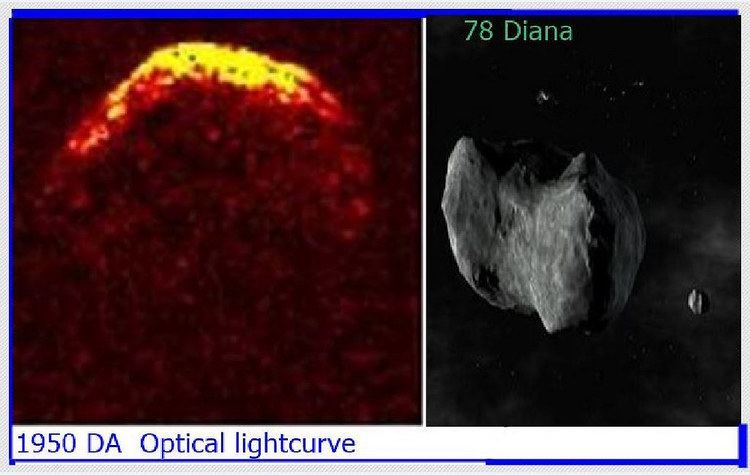Discovery date March 15, 1863 Aphelion 473.182 Gm (3.163 AU) Semi-major axis 391.934 Gm (2.620 AU) Discoverer Robert Luther | Minor planet category Main belt Perihelion 310.686 Gm (2.077 AU) Discovered 15 March 1863 Named after Diana | |
 | ||
Discovered by Karl Theodor Robert Luther Discovery site Düsseldorf-Bilk Observatory Similar Robert Luther discoveries, Other celestial objects | ||
78 Diana (dye-an'-a) is a large and dark main-belt asteroid. Its composition is carbonaceous and primitive. It was discovered by Robert Luther on March 15, 1863, and named after Diana, Roman goddess of the hunt. 78 Diana occulted a star on September 4, 1980. A diameter of 116 km was measured, closely matching the value given by the IRAS satellite.
Photometric observations of this asteroid during 1986 and 2006–08 gave a light curve with a period of 7.2991 hours and a brightness variation in the range 0.02–0.104 magnitude. Based upon radar data, the near surface solid density of the asteroid is 2.7+0.8
−0.5 g cm−3.
Diana is expected to pass about 0.003 AU (450,000 km; 280,000 mi) from (29075) 1950 DA on August 5, 2150. Main-belt asteroid 4217 Engelhardt (~9 km in diameter) will pass about 0.0017 AU (250,000 km; 160,000 mi) from (29075) 1950 DA in 2736.
